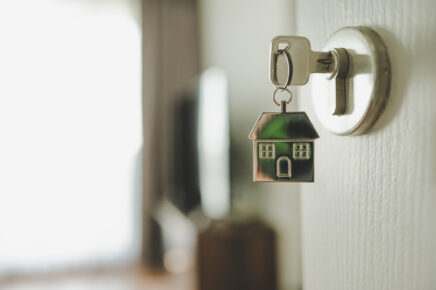Making the great Aussie homeownership dream a reality starts with saving for a deposit — typically 5% to 20% of the total cost of the mortgage. A deposit is not only an essential prerequisite for getting most home loans but also lets a prospective lender know that you’re serious about obtaining and servicing a mortgage.
What is a house deposit?
A house deposit, or a home loan deposit, is the home buyer’s initial contribution to the total purchase price of a property. A deposit of some size is a compulsory part of the property-purchasing process for first home buyers in virtually all circumstances. Deposits lessen the risk to the lender of the buyer defaulting and leaving them needing to recover the entire value of the property, and it demonstrates the buyer’s commitment to save and honour their mortgage contract.
The larger the deposit, the less money you’ll need to borrow to purchase the property, which also means that you’ll save a large amount in interest payments over the course of your mortgage. There are no limits to the size of the deposit you can place at the start of your loan process, but it’s highly unusual for a first-home buyer to have more than 20% of the total cost of the property saved at the commencement of the mortgage.
How much deposit do you need for a home loan?
A typical deposit consists of anything from 5%-20% of the total cost of the mortgage or home loan. If, for example, you are buying a $300,000 property and you put down a 10% deposit, the deposit amount will be $30,000, meaning you will need to borrow the remaining $270,000 from the lender.
In Australia, there are two ways of purchasing a residential property: through a private sale (also known as a private treaty) or through an auction, where the property is put up for sale, and the highest bidder wins the right to purchase it.
Deposits for private sales
In private sales, the buyer pays the seller or the seller’s real estate agent the deposit around the date on which the sale contract is exchanged. However, there is often some flexibility around this, and the buyer can have up to seven days to pay the deposit, as long as both parties agree. The remainder of the property’s sale price, or principal, is then due on the settlement date, usually six weeks after the initial contracts are signed.
Deposits for auction properties
For a property purchased at auction, the selling agent is required to inform bidders what the deposit percentage is — usually 5%-10% of the winning bid price. The contract is signed at the conclusion of the bidding process, and the deposit is usually due on the same day. For the buyer, especially a first home buyer, this doesn’t mean their lender will take the amount required on the day as the deposit, it’s just what the seller requires immediately following the auction.
The minimum deposit for a house
Mortgage terms and conditions vary between lenders, but as a general rule of thumb, the minimum amount they will require from a first-home buyer is 20%. But even a 5% deposit is possible with some lenders.
Additionally, the size of a deposit will depend on the amount you want to borrow and the length or term of the mortgage. Deposit requirements for second or third investment properties are generally far less stringent, as they usually involve using the equity (the amount you already own in your first property) in the purchase process.
Generally, the bigger, the better when it comes to deposits on home loans from lenders.
Benefits of a large deposit
Lenders favour larger deposits from first home buyers even if it means less profit for them over the mortgage term, because it demonstrates an ability to manage finances.
You’ll avoid lenders’ mortgage insurance
Additionally, most lenders have become more risk averse in increasingly uncertain post-Covid economic times and will require you to take out lenders’ mortgage insurance (LMI) from a third-party insurer if your deposit is less than 20% of the property’s cost, meaning your loan-to-value ratio is above 80%.
Mortgage insurance protects the lender if you default on the loan. The money you spend on it is money you don’t get back, so try to avoid paying it if at all possible. Some lenders offer LMI waivers for smaller deposits, but usually only for high-earning professionals in certain sectors, such as legal, financial services and medical.
One way to avoid mortgage insurance is to find a family member willing to go as a guarantor on your loan. In this scenario, they agree to guarantee or make your loan repayments if you are unable to make them in the future. You and your prospective guarantor will need to think about this carefully. Going guarantor places a lot of responsibility on them, as they are usually required to offer some sort of financial security, like their own property, as a guarantee on your mortgage.
You’ll save money over the life of your mortgage
Remember, the bigger the deposit, the less you have to borrow, which means potentially huge savings over the life of a mortgage.
Using a loan calculator from any lender’s website will reveal how the numbers speak for themselves. Let’s say you want a home loan for a $350,000 property over a 20-year mortgage term with only a 10% deposit. The amount you’ll need to borrow is $315,000, and with current interest rates at 3.99% (at the time of writing), the total repayment amount will be $457,723, including $142,723 in interest repayments.
If, on the other hand, you have a deposit of 20% and you only need to borrow $280,000 under the same conditions, your total repayments will be only $406,865, with total interest repayments of only $126,865, saving $16,000 in interest repayments alone over the course of the mortgage.
House prices across Australia have been steadily falling for a couple of months, and this trend is likely to continue, at least in the short term. So under these circumstances, it’s better to hold off taking out a mortgage and maximise your deposit in the meantime. Conversely, if the market were to rebound and real estate prices started going through the roof again, you may want to think about getting your foot in the door sooner rather than later.
» MORE: Should you buy or rent?
DIVE EVEN DEEPER

How Much Can I Borrow for a Home Loan?
Instead of focusing on how much the bank will let you borrow, you should focus on what you can actually afford.

Home Equity: What It Is and How to Use It
Anyone who has a home likely has some equity built up. While it may not seem like a lot if you’re a new homeowner, equity can grow over time and benefit you since it could increase your net worth.

LVR: Understanding Your Loan-to-Value Ratio
A loan-to-value ratio, or LVR, compares the home loan amount to the appraised value of a home. LVR ratios are evaluated when buying or selling a home, renewing or refinancing a mortgage, and when getting a home equity loan.

17 Types Of Home Loans For Buyers, Investors And Property Owners
Know the common home loan types for Australian buyers, investors and property owners so you can choose the best option for you.

